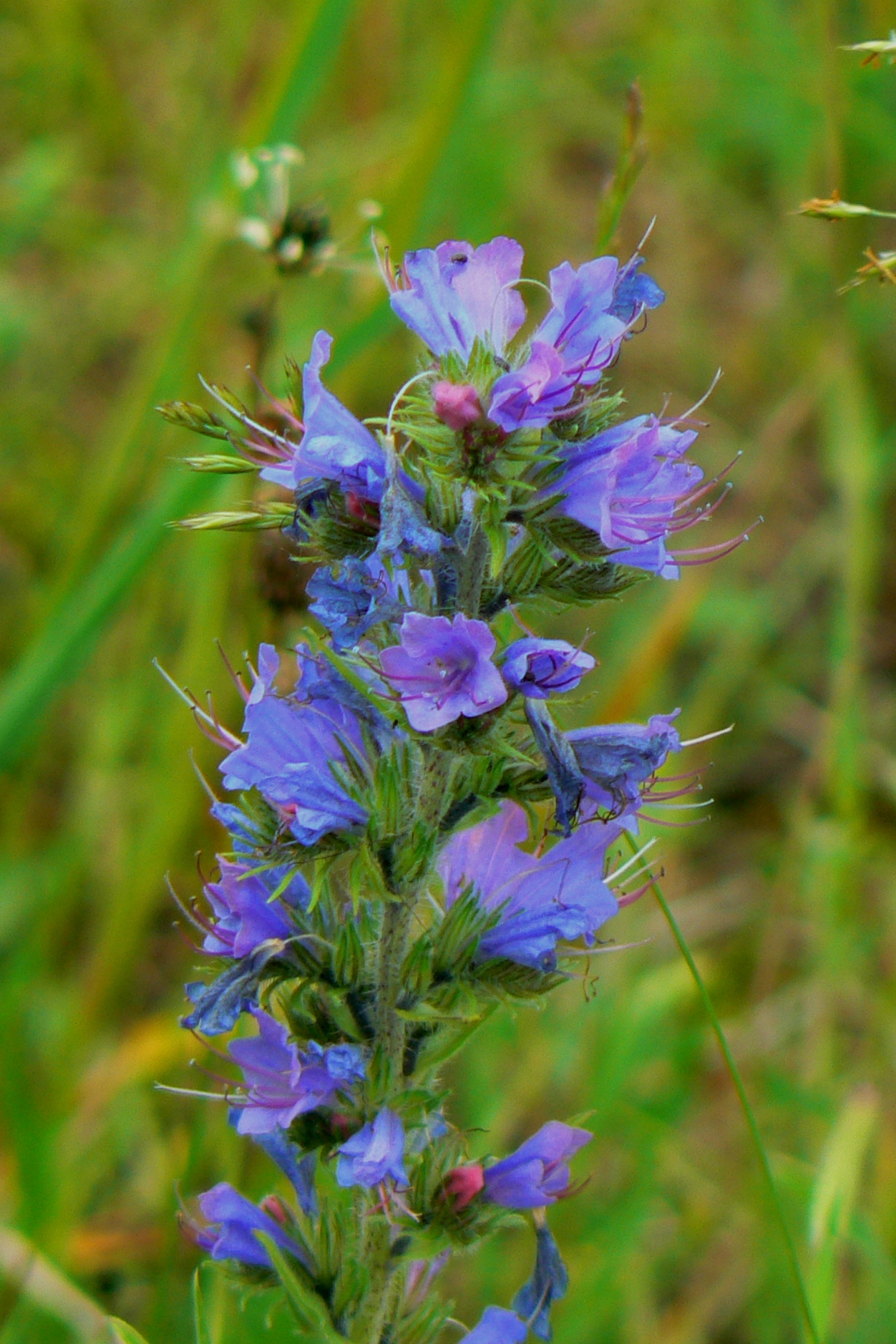
[121] Echium vulgare, Viper’s Bugloss
Echium plantagineum, Purple Viper’s Bugloss
Introduction
Echium vulgare, Viper’s Bugloss, and Echium plantagineum, Purple Viper’s Bugloss, are two similar species of common wildflowers with lots of blue flowers.
They should not be confused with Hadena irregularis, the Viper’s Bugloss, a moth whose caterpillar feeds on Echium vulgare and related plants.
Other species of Echium and the related species Anchusa, Amsinkia, Alcanna and Brunnera are also called Bugloss.
Echium vulgare is also known as Blueweed. In Australia Echium plantagineum has the alternative name Paterson’s Curse or Salvation Jane.
Taxonomy
Kingdom – Plants
Division – Vascular Plants
Class – Angiosperms (Flowering Plants)
Order – Boraginales
Family – Boraginaceae
Genus – Echium
Scientific Name – Echium vulgare, Echium plantagineum
Name
By now, you should expect the unexpected when it comes to names. Bugloss has nothing to do with losing bugs. It comes from the Greek ‘bouglosson’ meaning ox-tongue. I can’t find why it is called this, but it is probably because of its rough, hairy leaves. See [173] Helminthotheca echioides, Bristly Ox-tongue (which derives its species epithet from Echium!).
The reference to vipers is not clear. One theory is that the fruits are shaped as a viper’s head. Another is that the forked style of the flower resembles a viper’s tongue. Also, the plant roots also used to be used to treat snake bites.
Echium comes from ‘echis,’ the Greek word for viper. Vulgare, of course, means common. Plantagineum relates to [271] Plantago, Plantains, which have similar leaves.
Description
As wild plants, these are the ones to give the greatest displays of blue flowers. Echium vulgare has a single stem covered by all-round flowers.







Echium plantagineum is bushier, with perhaps a more purple colour.


Habitat and use
Echium vulgare is native to Europe including the UK and temperate Asia but has been introduced elsewhere, generally becoming naturalized and often invasive.
Echium plantagineum is native to parts of Europe, Asia and north Africa, including the south of England. It has also become invasive in places, especially Australia.
Both species are cultivated as garden plants (and some other Echium species.) Several cultivars are available, including some with white flowers.

Other Notes
Echium plantagineum was introduced to Australia in the 1880s as an ornamental plant and as an accidental contaminant of seeds. It has spread wildly and is sometimes used as a fodder plant but is poisonous to horses. Both of its Australian names probable come from Jane Paterson or Patterson, an early settler. It is now a widespread noxious weed in several states of Australia,
Most of the wildflowers I see are in relatively recently cultivated areas of meadow plants in our local plants so I can’t be sure whether are wild varieties or cultivated varieties. These two species and other Echium have cultivated varieties and when this happens it is not so easy to identify the exact species.
See also
Not in any way related are the Bristly Ox-tongue and [359] Viper.

Pingback: [233] Myosotis Species, Forget-me-not | The Species of Britain
Pingback: [254] Pentaglossis sempervivens, Green Alkanet | The Species of Britain